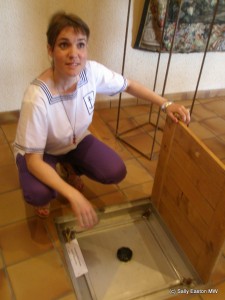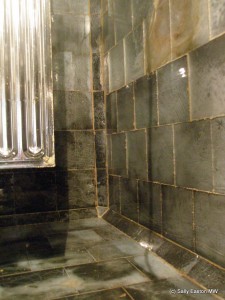Muscadet vats

Marie-Chartier Luneau of Domaine Luneau-Papin opens up an underground vat in the tasting room.
Sometimes I come across something really basic that I feel I should have known for ever. But somewhere along the line it totally passed me by. It can be wonderful to make such, often simple, ‘discoveries’ which also show so well how little I know about wine and how aspirational it remains.
Exploring Nantais for the first time, I discovered the importance of underground, glass-(tile) lined vats to make Muscadet and Muscadet Sèvre et Maine. Such vats have become traditionally used since their installation in the region during the 1950s and 1960s.
After pressing and settling, juice is typically drained to the underground vats for fermentation. While these provided some natural temperature moderation before refrigeration was common, these vats can now be found with temperature control kit inside them. The equipment allows much more precision in temperature management and thus fermentation control.
The wine subsequently rests sur lies for several months according to wine style and producer preference. There are 40 of these vats at Domaine Luneau-Papin for example, varying in size from 40-80hl. Some are used to store wines up to three years, while the majority, about 25-30 of them, are used each year in the annual harvest.

Glass-lined vat with modern temperature control
Not all Muscadet fermentation is made exclusively in these underground vats. Old foudres and stainless steel are also used.



